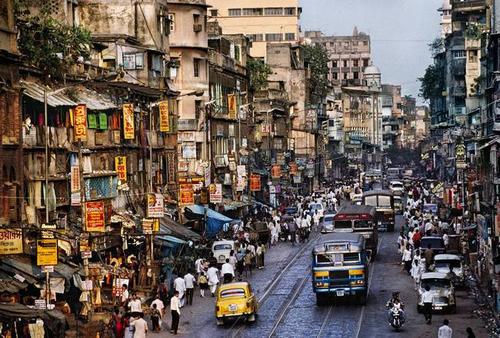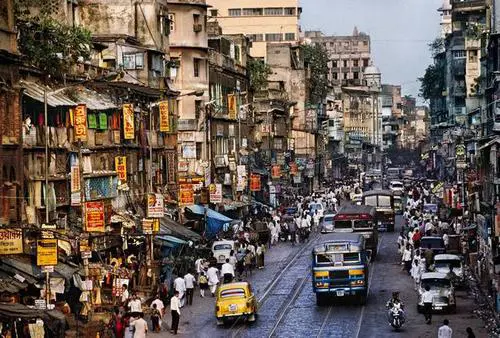Editor's Note : The writer, Mr. I. Hussain Janjua is a senior media professional and analyst having experience of research & broadcast journalism in different organisations. He is a non-resident fellow of Chengdu Institute of World Affairs (CIWA). (Email: [email protected]; twitter: @ihussainjanjua)
The Indian economy is in a tailspin and it may actually witness something worse than a recession as New Delhi has never faced a sustained long-term downturn in economic activity in its 73 years of existence as an independent country. But there is now every likelihood that India is bracing for a depression for the first time in its history.
In the midst of this possibility various estimates have come to the fore --- the World Bank pegs it at 3.2 per cent while Credit Rating Information Services of India Limited (CRISIL) puts it at 5 per cent. However, Reserve Bank of India survey paints the rosiest picture of economy contracting by only 1.5 per cent.

But several economists warn that the impact will likely be much worse. Surajit Das, Assistant Professor at JNU’s Centre for Economic Studies and Planning (CESP) has put it in these words: “Since economic recovery does not happen overnight, economic activities in the next few quarters will also take some time to recover. Looking at GDP from an output and employment point of view, I would say you are looking at anything between a 15 and 22 per cent contraction.”
An independent countrywide survey involving 1,000 respondents carried out by research scholars at the CESP found out that at least 80 per cent of them have put off plans of purchasing consumer durables (ACs, washing machines, TVs and other white goods), automobiles and real estate the sales of non-essential items such as clothes, electronics and furniture fell by 80 per cent in May. Even sales of essential goods such as groceries and medicines dipped by 40 per cent.
According to Veteran economist Arun Kumar exports, investment and consumption, all three engines of growth went into a tailspin. “In the current fiscal, the GDP is set to contract by at least 30 per cent. My estimate is that from Rs 204 lakh crore, our GDP will come down to Rs 130 lakh crore. Tax to GDP ratio will fall from 16 per cent to 8 per cent. In such a situation, it would be difficult for the government to pay salaries or finance the defense budget.”
Kumar goes further in saying, “India would be the first country in modern history to face a depression. It would take at least three to four years to emerge out of it.”
A detailed analysis by Pronab Sen, former Chief Statistician of India, that was published in Ideas for India, an Indian Express initiative, showed India’s economy will contract not just this year but also in 2021-22. That means not recession but depression.

Goldman Sachs predicts the Indian economy will shrink by 45 percent on an annualized basis this quarter, and suffer its most severe recession since 1979 this fiscal year as the pandemic wreaks havoc on many of its industries --- the near future looks uncertain as infections rise with nearly 3,000,000 cases and over 55,000 deaths so far, setting a new record almost every other day --- the ILO projecting 400 million people in risk of falling into poverty.
According to latest data, foreign direct investment in India is also being suppressed by global economic uncertainty and the failure of Narendra Modi's government to make doing business in the country easier. But analysts also blame global factors including Brexit and US President Donald Trump's protectionist policies for this state of affairs.
Meanwhile, the rising number of Covid-19 cases has put Prime Minister Narendra Modi’s government in a Catch 22-like situation as the increased economic activity is coupled with elevated risk of higher infection rate. Moreover, India’s expansionist designs further bring its economy under stress as New Delhi has taken on with almost all its neighbors.
As India is now gradually unlocking its economy after a shutdown of more than two months, it's unlikely to be business as usual for millions of retailers, small enterprises and factories as on the one hand, owners have fled the cities and are yet to return, and on the other, with job losses mounting and banks averse to offering consumer loans.
Yet another but not last troubling factor is rising unemployment figures that are highest among the middle class, mostly salaried people primarily in urban and semi-urban regions. A report of Center for Monitoring Indian Economy (CMIE) recently highlighted that more than 1.8 crore salaried jobs — a whopping 22 per cent — were lost due to the ongoing economic crisis; nearly 50 lakh of them in July.
“Salaried jobs were estimated at 86.1 million in 2019-20. This fell to 68.4 million in April 2020. By July 2020, their count had fallen further to 67.2 million,” it added.
(ASIA PACIFIC DAILY)
 简体中文
简体中文

